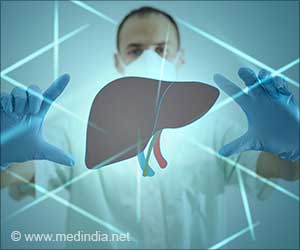A case study describes an innovative, minimally invasive procedure that treated plastic bronchitis, a potentially life-threatening disease, in a six-year-old boy with a heart condition.

"Our technique represents a new treatment option for plastic bronchitis, which is a rare but often fatal complication of pediatric surgery for single-ventricle disease," said Yoav Dori, M.D., Ph.D., a pediatric cardiologist in the Cardiac Center at The Children's Hospital of Philadelphia (CHOP), who is the co-author and part of a specialized team which included interventional radiologist Maxim Itkin, M.D., of the Perelman School of Medicine at the University of Pennsylvania, and Marc S. Keller, M.D., an interventional radiologist at CHOP.
Plastic bronchitis is a lymphatic flow disorder, one of a group of diseases characterized by abnormal circulation of lymph, a fluid with a crucial role in immune function and fat and protein transport. Because it has traditionally been difficult to obtain clear images of the lymphatic system, lymphatic flow disorders have often gone undiagnosed. CHOP and Penn are de facto world leaders in lymphatic interventions in children and adults.
The child in the case study, like others with plastic bronchitis, underwent a series of early-childhood heart surgeries, leading to the Fontan procedure, for the birth defect hypoplastic left heart syndrome (HLHS). In HLHS, the left ventricle, one of the heart's pumping chambers, is severely underdeveloped. Some 5 to 10 percent of patients experience plastic bronchitis as a consequence of altered venous and lymphatic pressure resulting from Fontan surgery.
The abnormal circulation causes lymph to ooze into a patient's airways, drying into a fibrous, caulk-like cast formation that takes the shape of the airways. If a child is unable to cough out the cast, the blockage may cause fatal asphyxiation.
In the case study published today, a 6-year-old boy with HLHS had undergone Fontan surgery three years previously. At age five and a half, he suffered respiratory distress and was admitted to a community hospital. Over the next several months, despite a series of evaluations and drug treatments, he continued to have frequent casts.
Advertisement
"Our image analysis allowed us to plan the intervention," said Dori. The team decided on a technique called selective lymphatic embolization. Working in CHOP's interventional cardiac catheterization suite, they injected iodized oil into the leaky small vessel lymphatic network and then glued shut the abnormal dilated feeder lymphatic duct. Stemming the abnormal flow resolved the child's plastic bronchitis. "Eleven months after the procedure, the patient remained free of symptoms, was able to discontinue taking respiratory medicines, and is now playing on a soccer team" said Itkin. Although further investigation must be done in other patients, the authors conclude that selective lymphatic embolization is a potential new treatment for plastic bronchitis. Its targeted, noninvasive application to only the affected site may offer better outcomes for patients.
CHOP and Penn to Launch Program in Lymphatic Interventions
Plastic bronchitis is one of several lymphatic flow disorders affecting children and adults. Building on their research and clinical expertise in this area, CHOP and Penn Medicine are jointly launching the Lymphatic Imaging and Interventions Program. Among the conditions it will address are chylopericardium and chylothorax, resulting from the leakage of lymphatic fluid into the sac around the heart and into the thoracic cavity, respectively. A similar condition, chylous ascites, occurs when the fluid leaks into the peritoneal cavity.
The center will treat other disorders of lymphatic flow due to diseases such as lymphoangiomatosis, Gorham's disease and lymphangioleiomyomatosis. In addition to plastic bronchitis, some Fontan patients develop another serious lymphatic complication called protein-losing enteropathy that results in leakage of lymphatic fluid and protein into the intestine.
Most of these disorders are individually very rare, so patients requiring this highly specialized care will have access to a dedicated program with clinicians who are world leaders in managing these diseases.
Source-Eurekalert















